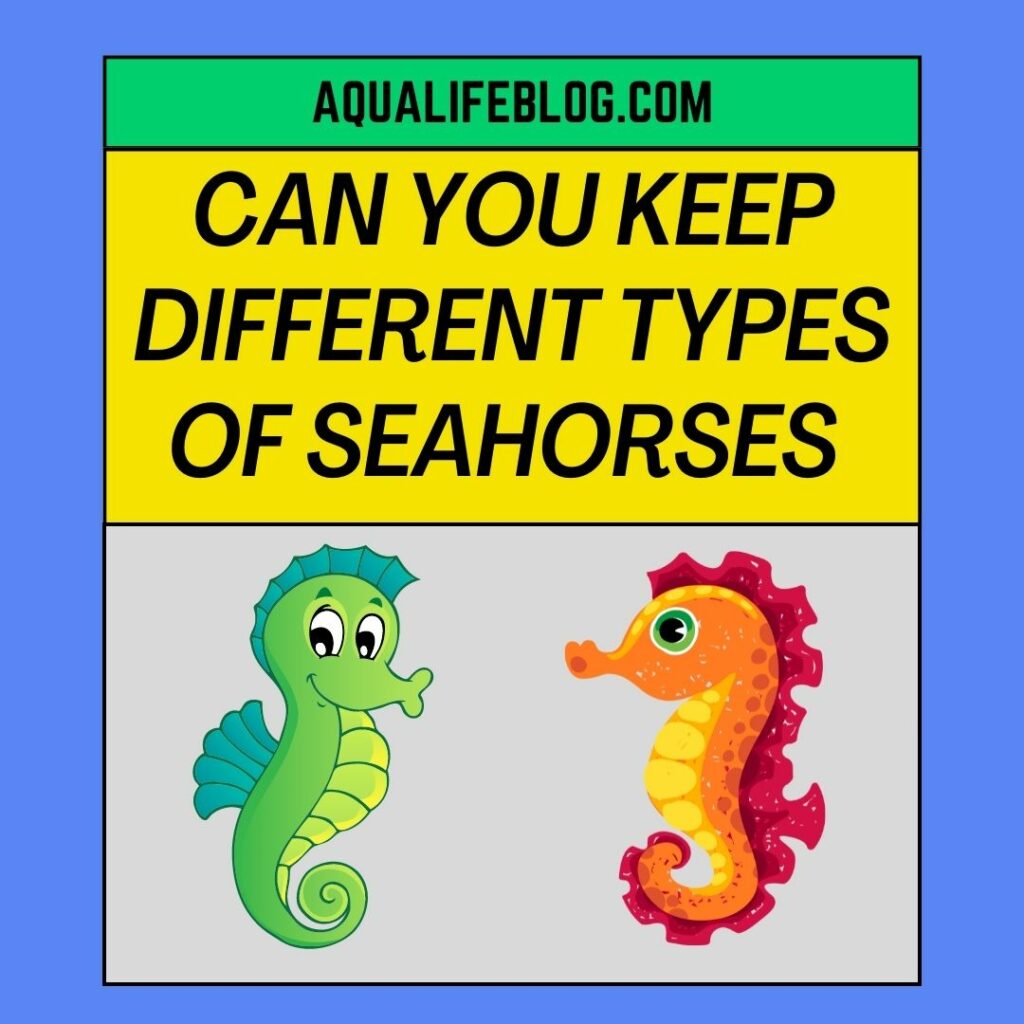
There are many types and species of seahorses with their various types of water and living conditions etc. Seahorses differ in both size and living conditions, this is because some are very hard to raise In an aquarium, while some are not that hard to raise in an aquarium. Noting the big gap or differences between various species or types of Seahorses, one may begin to ask if you can keep different types of seahorses together. In this article, you will learn if it’s possible and the types that could be kept together.
Can you keep different types of Seashores together? Yes, you can keep different types of Seahorses together, but it’s not recommended because they are harder to maintain when kept together.
Many Seahorse keepers will tell you never to keep different species or different types of Seahorses together, this is because just one species of this animal is very hard to maintain even to talk of keeping different species of them together.
Seahorses are not aggressive to each other, but mixing different species of them could be catastrophic if the right species are not mixed or if the proper care is not given, so it is generally not recommended.
In this article, we will look at some of the reasons why it is not recommended to mix different types or species of these animals in one tank.

Why Different Species Of Seahorses Shouldn’t Be Kept Together
Some of the reasons why different types of Seahorses Shouldn’t be kept together are:
1) Breeding of Diseases and Infections:
If you are knowledgeable about seahorses, you will know that they are fragile and could easily be affected by diseases and infections.
This usually happens when captive breeds and those gotten from the wild are mixed up in the same aquarium.
Although the captive breed and the wild might be of the same specie or they might not, the wild breed might have some diseases which it is very immune to and the captive breed might not be immune to it and it might kill them.
The immune system of the wild breed seahorses is stronger than those that have lived all their lives in captivity, but when taken captive, the wild seahorses rarely survive.
So, you can’t mix wild seahorses with those in captivity no matter the species or type because those that have lived in the wild are harder to maintain in the aquarium and their living conditions will differ from those in captivity.
2) Differences in Water Types and Parameters:
Every species of aquatic animal has its specific types of water they dwell in and also the water parameters they could live in too.
Seahorses have their specific water types and parameters according to their species, for instance, there are some species that dwell in cold water, some dwell in tropical water, and some dwell in warm water, etc.
Apart from their differences in the type of water they could dwell in, another great difference between them is water pH and water hardiness.
Let’s say you get some of them from a specie that lives in cold water and keep them with those that could only do well in a temperate or warmer type of water, they will end up not being comfortable, and so many of them, if not all will have to die in a short while.
This is because the water temperature, oh and hardiness will only end up favouring only one specie of Seahorses, leaving the other species to their detriment which will end up affecting their health and killing them.
3) Size Differences:
Apart from water differences, they also have different sizes, depending on the species.
Some Seahorses are big, like the Prickly seahorses (Hippocampus barbouri), commonly known as Barbs, while some like the dwarf seahorses are very tiny.
If you check the size of these two species of seahorses I mentioned above, you know that the size gap is very much, and so both can’t be kept in the same environment because not even the same type of tank could contain the two species.
If kept together, the bigger ones may eat up the tiny ones, so, this is one of the reasons why different species of seahorses could not be kept together.
How Many Seahorses Can You Keep Together?
As I mentioned above, Seahorses are very fragile, and so requires exceptional care for them to survive, so the number of these animals that you can keep together should be very minimal because keeping many in a tank or pond will spike the ammonia level in the water which is very harmful to their health.
How many Seahorses can you keep together? The recommended number of seahorses to keep together in a tank is 6-8. This is to enable you to control and care for them effectively which is harder to do when they are many.
Should Seahorses Be Kept In Pairs?
Some Seahorses are social while some are not, but overall, it depends on their upbringing.
Those that were raised in captivity tend to be more social than those that were raised in the wild, so they could be kept in pairs.
I don’t think wild Seahorses do feel lonely and so could be kept alone, but keeping the. in pairs should be ideal.
Can Dwarf Seahorses Live With Regular Seahorses
Although different species of seahorses could live together, it is not recommended, so Dwarf Seahorses are not recommended to be kept with regular Seahorses or other species of seahorses.
This is because their ideal temperature, pH and water type, and also size gap might become a huge problem in the long run, hence the different species of seahorses are not recommended to be kept in one environment and in one pond or tank.
Conclusion
Although you can keep different types of Seahorses together in a tank or a pond, only if you could care for them.
Generally, it is not recommended and so you shouldn’t try it.
References
